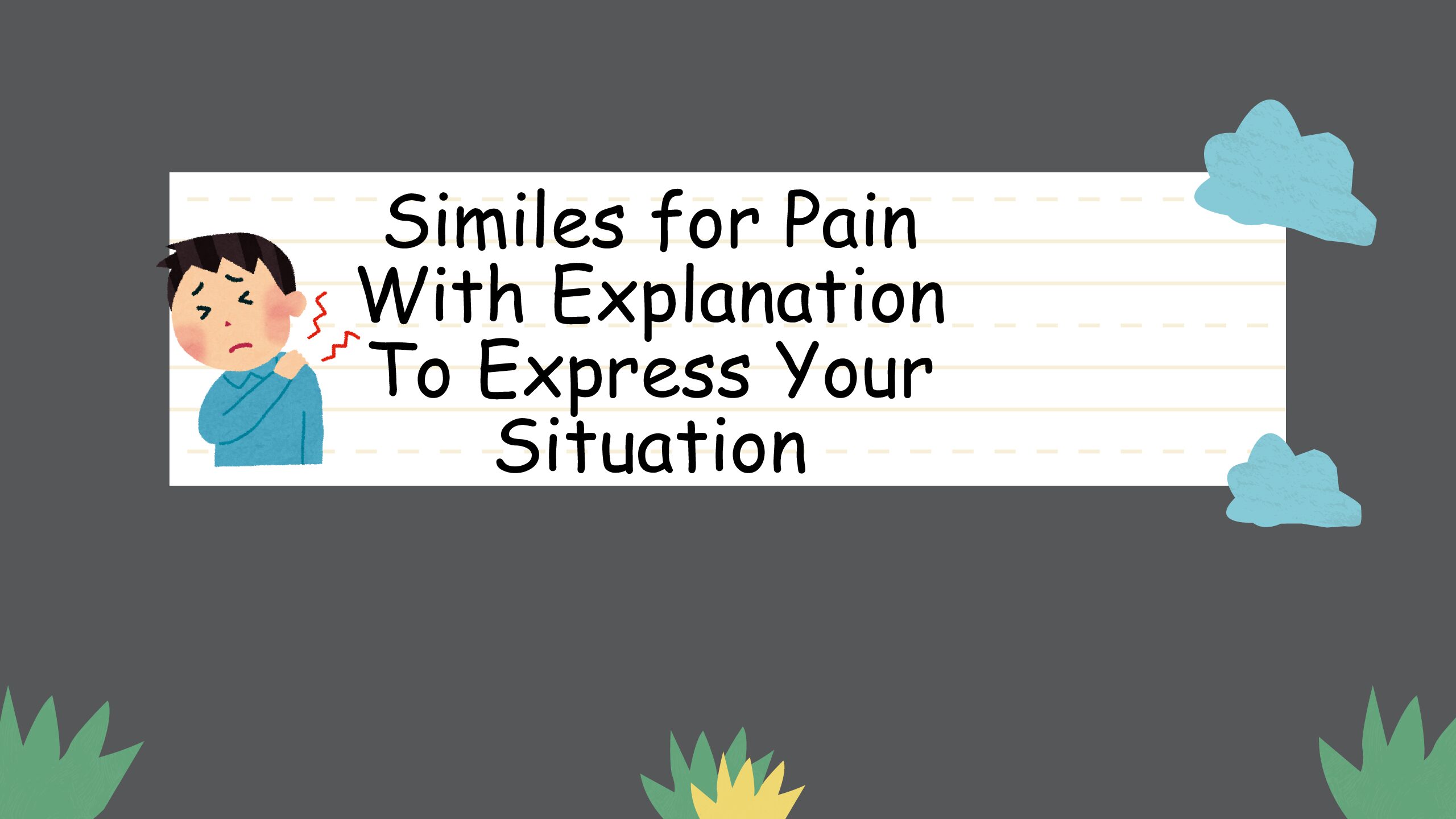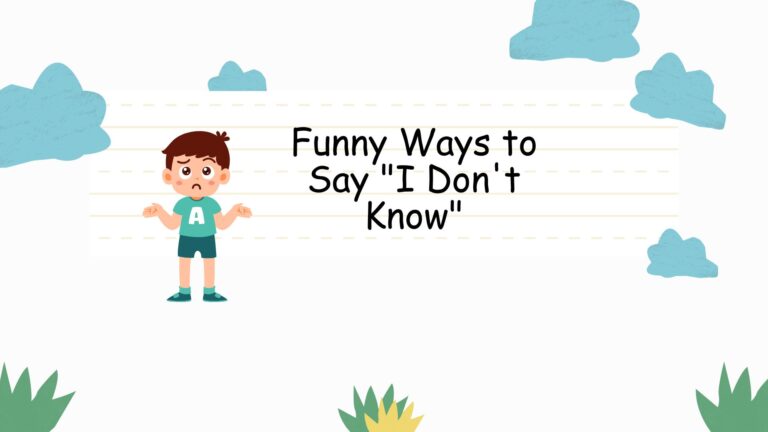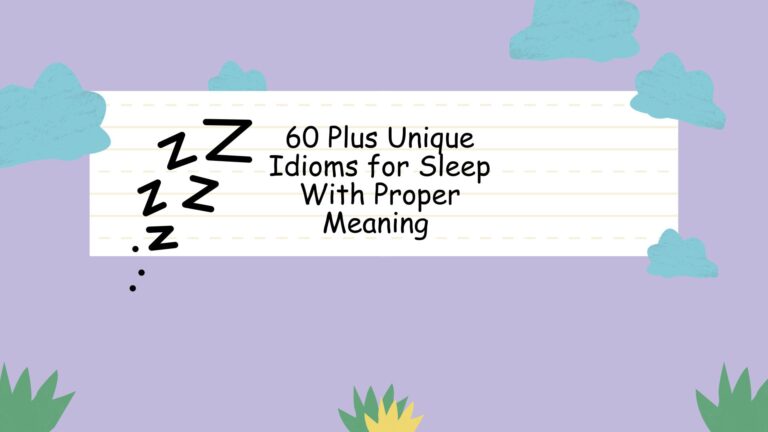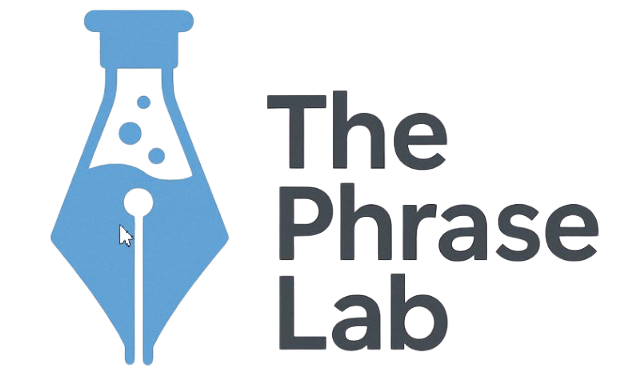
Other Ways to Say “Nice to Hear From You”: A Comprehensive Guide
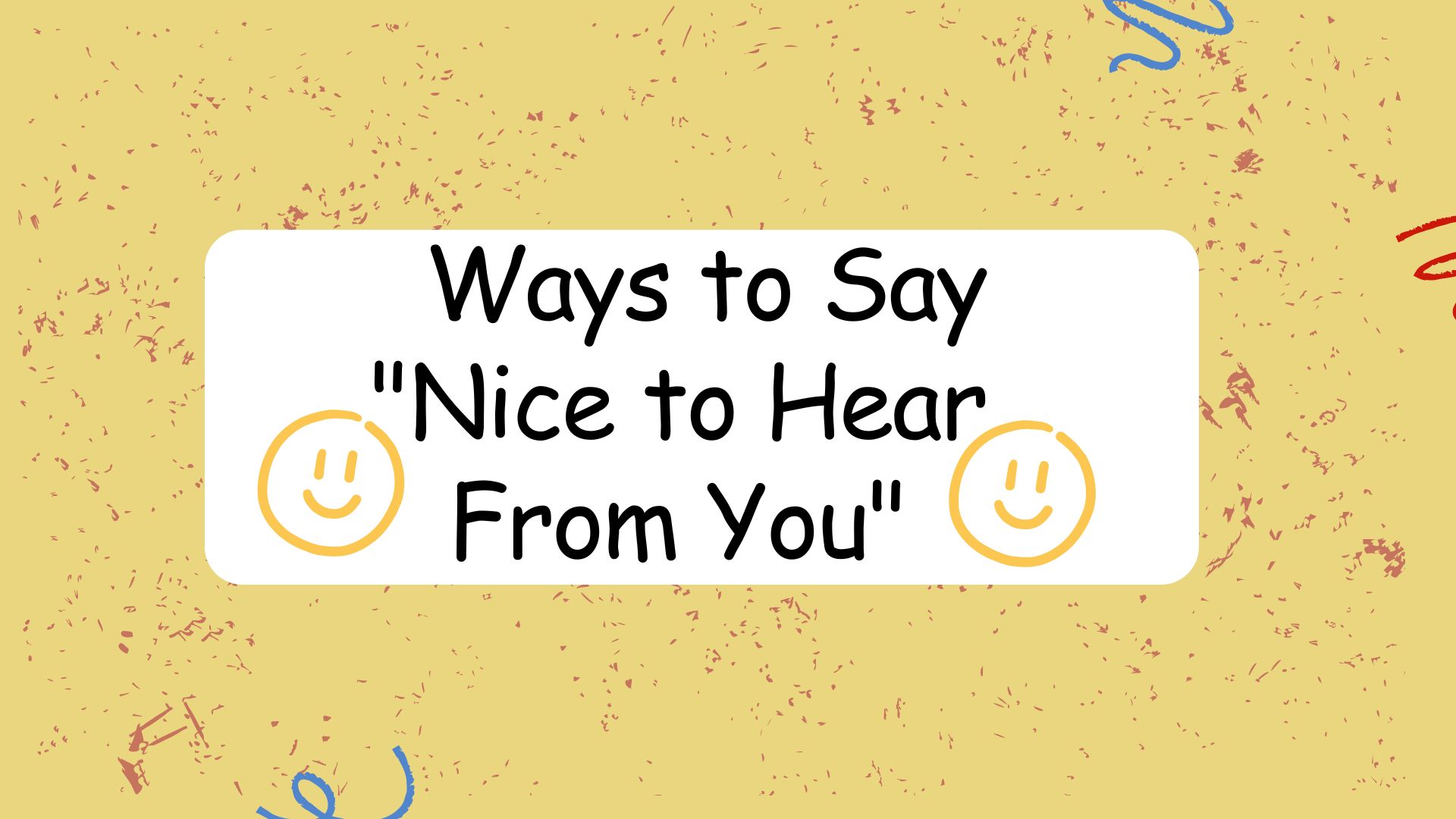
The phrase “Nice to hear from you” is a common and polite way to acknowledge someone who has contacted you, expressing your pleasure at receiving their communication. However, relying solely on this phrase can make your conversations sound repetitive and lack nuance. Expanding your repertoire of alternatives allows you to convey your sentiments more effectively, adding depth and personality to your interactions. This guide explores a wide range of alternatives to “Nice to hear from you,” categorized by formality and context, providing you with the tools to communicate more precisely and engagingly. Whether you’re writing professional emails or chatting with friends, mastering these alternatives will enhance your communication skills and make your interactions more meaningful.
Table of Contents
- Introduction
- Definition
- Structural Breakdown
- Types or Categories
- Examples
- Usage Rules
- Common Mistakes
- Practice Exercises
- Advanced Topics
- FAQ
- Conclusion
Definition
The phrase “Nice to hear from you” is a standard expression used to convey pleasure upon receiving communication from someone. It serves as a polite and friendly acknowledgment, indicating that you appreciate the person reaching out. The phrase’s simplicity makes it versatile, suitable for various contexts, from professional emails to casual conversations. However, its widespread use can sometimes make it feel generic, highlighting the need for alternative expressions to convey more specific emotions or nuances.
Classification: It’s a conventional expression categorized as a greeting or acknowledgment. Its function is primarily phatic, meaning it serves to establish or maintain social connection rather than conveying substantial information. The phrase functions as a politeness marker, signaling goodwill and receptiveness to further communication. Using variations of this phrase allows for a more personalized and genuine expression of sentiment.
Contexts: This phrase and its alternatives are suitable for a wide range of contexts, including email correspondence, phone conversations, text messages, and face-to-face interactions. The appropriate alternative will depend on the relationship with the person you are communicating with, the formality of the situation, and the specific emotion you wish to convey. Consider the recipient’s personality and your existing relationship when choosing the best way to express your pleasure at hearing from them.
Structural Breakdown
The basic structure of “Nice to hear from you” is relatively simple: an adjective (“Nice”) modifying an infinitive phrase (“to hear from you”). The phrase expresses a positive sentiment (“Nice”) about the action of receiving communication (“to hear from you”). Understanding this structure allows you to create variations by substituting different adjectives or rephrasing the infinitive phrase.
The structure can be broken down as follows:
- Adjective: Expresses the sentiment (e.g., Nice, Good, Great, Wonderful).
- Infinitive Phrase: “to hear from you” – the action of receiving communication.
Variations often involve changing the adjective to reflect a different degree of enthusiasm or substituting the infinitive phrase with a more specific expression. For example, instead of “to hear from you,” you might say “to get your email” or “to receive your call.” The key is to maintain the positive sentiment while tailoring the phrase to the specific context and your relationship with the recipient.
Types or Categories
Alternatives to “Nice to hear from you” can be categorized based on formality and the specific nuance you want to convey. Here are some common categories:
Formal Alternatives
These alternatives are suitable for professional correspondence, interactions with superiors, or when maintaining a respectful distance. They emphasize politeness and professionalism.
Semi-Formal Alternatives
These alternatives strike a balance between formality and friendliness. They are appropriate for colleagues, acquaintances, or situations where a more relaxed tone is acceptable but still requires respect.
Informal Alternatives
These alternatives are perfect for friends, family, or close colleagues. They reflect a casual and friendly relationship.
Enthusiastic Alternatives
These alternatives convey excitement and genuine pleasure at hearing from someone. They are suitable for situations where you want to express strong positive emotions.
Acknowledging a Delay
These alternatives are used when you are responding to someone after a significant delay. They acknowledge the time that has passed and express your apology or explanation for the delay.
Examples
The following sections provide examples of alternatives to “Nice to hear from you,” categorized by formality and context.
Formal Examples
These examples are suitable for professional emails, formal letters, and interactions with superiors or clients. They maintain a respectful and polite tone.
The table below presents a variety of formal alternatives to “Nice to hear from you,” along with contextual notes to guide their appropriate use.
| Alternative | Context |
|---|---|
| It’s a pleasure to hear from you. | Starting a formal email or letter. |
| I appreciate you reaching out. | Acknowledging someone’s effort to contact you. |
| Thank you for your email. | Directly acknowledging receipt of an email. |
| I am glad to receive your message. | Formal and polite, suitable for initial contact. |
| It was good to receive your update. | When they have provided information or news. |
| We appreciate your continued communication. | Acknowledging ongoing contact, typically in a business setting. |
| Thank you for getting in touch. | A general, polite acknowledgment. |
| I was pleased to receive your letter. | Specifically for written correspondence. |
| We value your input. | When the communication contains feedback or suggestions. |
| I am grateful for your message. | Expressing gratitude for the communication. |
| Your correspondence is greatly appreciated. | Very formal, suitable for high-level communications. |
| We acknowledge receipt of your communication. | A formal way to confirm you received their message. |
| It is a pleasure to connect with you. | Suitable for networking or establishing a new connection. |
| Thank you for keeping us informed. | When they provide updates or important information. |
| I welcome your communication. | Expressing openness to future contact. |
| Your message is well-received. | Formal and positive, indicating the message was appreciated. |
| We are pleased to have received your inquiry. | Responding to an inquiry or request. |
| Thank you for your prompt response. | When they replied quickly. |
| I am delighted to receive your feedback. | Specifically when the message is feedback. |
| We appreciate you reaching out to us. | A polite and formal way to acknowledge their contact. |
| I found your email to be very informative. | When the email provided useful information. |
| We are thankful for your contribution. | When the communication included a specific contribution. |
| Your message has been duly noted. | Formal and indicates that the message has been taken seriously. |
| I appreciate the information you have provided. | When the email provided specific information. |
| Thank you for your comprehensive update. | When the email provided a detailed update. |
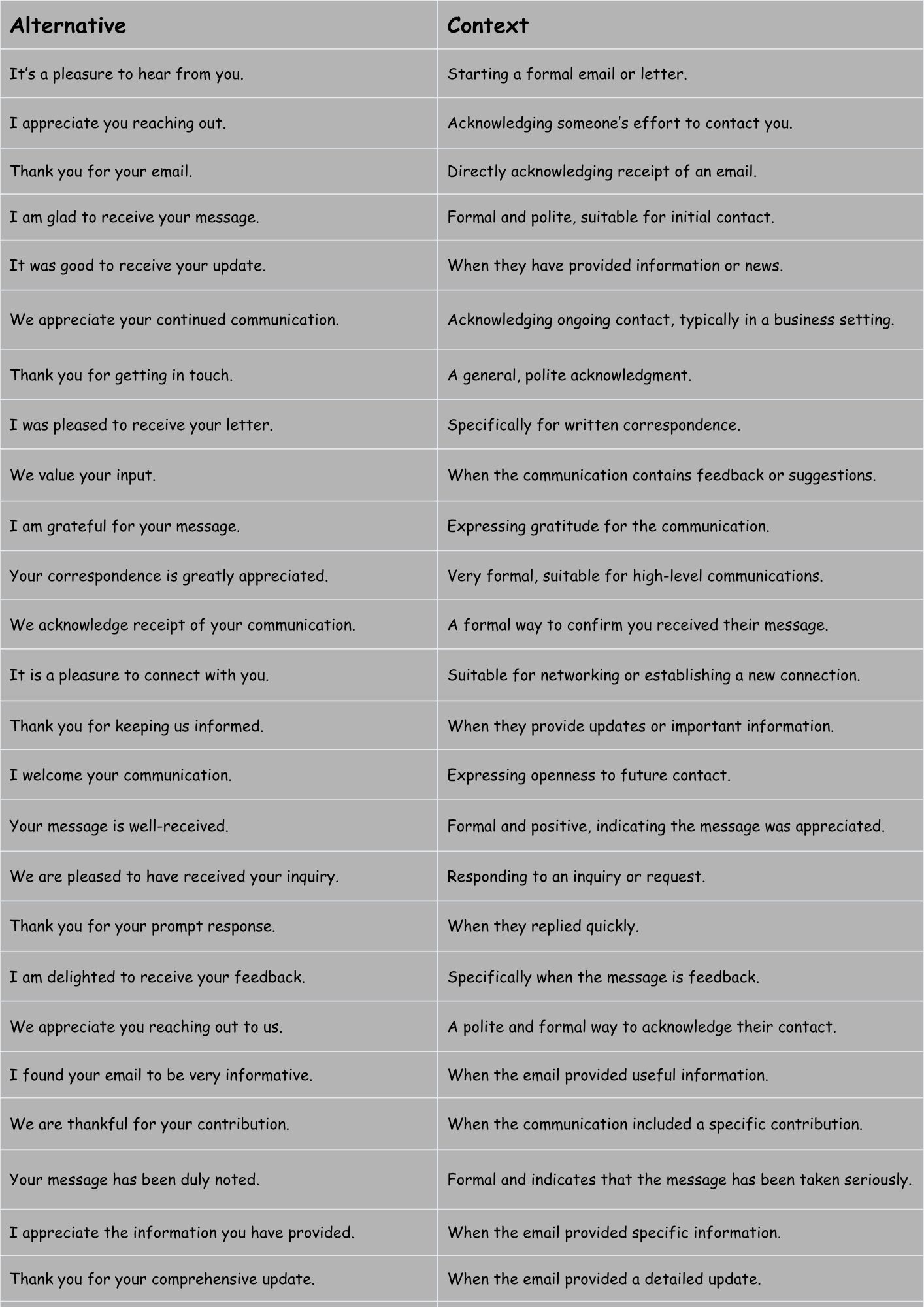
Semi-Formal Examples
These examples are appropriate for colleagues, acquaintances, or situations where a more relaxed tone is acceptable but still requires respect. They offer a balance between professionalism and friendliness.
The table below showcases semi-formal alternatives to “Nice to hear from you,” suitable for professional yet friendly communication.
| Alternative | Context |
|---|---|
| Good to hear from you. | A simple and versatile alternative. |
| It’s good to get your email. | Specifically when referring to an email. |
| Great to hear from you again. | When they have contacted you before. |
| Glad to get your message. | A slightly more casual alternative to “glad to hear from you”. |
| Thanks for getting in touch. | A friendly and appreciative response. |
| Appreciate you reaching out. | Short and to the point. |
| It’s nice to get your perspective. | When they have offered an opinion or viewpoint. |
| I appreciate the update. | Specifically when they have provided an update. |
| Thanks for keeping me in the loop. | When they have provided ongoing information. |
| Good to know what you’re up to. | When they have shared their activities or progress. |
| It was great to get your thoughts on this. | When they have offered feedback or suggestions. |
| Thanks for the quick reply. | When they have responded promptly. |
| I’m happy to see your message. | Expressing general pleasure at their contact. |
| It’s always good to hear your news. | When they have shared personal or professional news. |
| Thanks for sharing that with me. | When they have shared information or insights. |
| It’s helpful to hear from you. | When their message provides useful information. |
| Thanks for the heads-up. | When they have provided a warning or important notice. |
| I appreciate you taking the time to write. | Acknowledging their effort in writing the message. |
| It’s reassuring to hear from you. | When their message provides comfort or support. |
| Thanks for your input on this. | When they have offered feedback or suggestions. |
| It’s great to have your support. | When they have provided assistance or encouragement. |
| Thanks for your contribution to this project. | When they have helped with a specific project. |
| I appreciate you flagging this. | When they have pointed out an issue or problem. |
| Thanks for keeping me informed about this situation. | When they have provided updates on a specific situation. |
| It’s always valuable to hear from you. | Expressing that their opinions are always appreciated. |
Informal Examples
These examples are suitable for friends, family, or close colleagues. They reflect a casual and friendly relationship.
The table below lists informal alternatives to “Nice to hear from you,” ideal for casual conversations with friends and family.
| Alternative | Context |
|---|---|
| Hey, good to hear from you! | A casual and friendly greeting. |
| What’s up? Good to hear from you! | Starting a casual conversation. |
| So glad you reached out! | Expressing genuine happiness. |
| It’s awesome to hear from you. | A more enthusiastic informal response. |
| Great to hear your voice. | Specifically for phone calls. |
| Long time no see (or hear)! | When it has been a while since you last communicated. |
| Good to see your name pop up. | When receiving a message online. |
| Happy to hear from you! | A cheerful and friendly response. |
| It made my day to hear from you. | Expressing strong positive emotion. |
| So good to get your message. | Simple and friendly. |
| What a pleasant surprise! | When you were not expecting to hear from them. |
| So glad you thought of me. | Expressing appreciation for being remembered. |
| It’s always a treat to hear from you. | Expressing that their messages are always enjoyable. |
| How’s it going? Good to hear from you! | Starting a casual conversation. |
| Nice to see you’re still alive! (humorous) | A humorous response for close friends. |
| It’s been too long! | When it has been a while since you last communicated. |
| Glad you’re doing well! | When they have shared positive news. |
| So good to catch up. | When you are looking forward to a longer conversation. |
| You’re a sight for sore eyes (or ears)! | Expressing strong pleasure at their contact. |
| It’s like a breath of fresh air to hear from you. | Expressing that their message is refreshing or uplifting. |
| You made my day! | Emphasizing how happy you are. |
| Always a pleasure! | Short, sweet, and friendly. |
| Great to connect. | Simple and easy to use. |
| Lovely to hear from you. | More heartwarming than nice. |
| So glad you remembered me! | Expressing appreciation for being remembered. |
Enthusiastic Examples
These alternatives convey excitement and genuine pleasure at hearing from someone. They are suitable for situations where you want to express strong positive emotions.
The table below provides enthusiastic alternatives to “Nice to hear from you,” perfect for expressing genuine excitement and joy.
| Alternative | Context |
|---|---|
| I’m absolutely thrilled to hear from you! | Expressing extreme excitement. |
| Wow, it’s fantastic to hear from you! | Expressing surprise and delight. |
| I was so excited to see your message! | Emphasizing your anticipation. |
| This totally made my day! | Expressing that their message brought you great joy. |
| You have no idea how happy I am to hear from you! | Expressing a high degree of happiness. |
| I jumped for joy when I saw your email! | A playful and exaggerated expression of excitement. |
| This is the best news I’ve heard all day! | Expressing that their message is particularly welcome. |
| I’m over the moon to hear from you! | Expressing extreme happiness and delight. |
| I couldn’t be happier to hear from you! | Expressing the highest degree of happiness. |
| This is such a pleasant surprise! | When you were not expecting to hear from them. |
| I’m so stoked to hear from you! | (Informal) Expressing great enthusiasm. |
| You totally made my week! | Expressing that their message brought you lasting joy. |
| This is the highlight of my day! | Expressing that their message is the most exciting thing that happened. |
| I’m bursting with joy to hear from you! | Expressing overwhelming happiness. |
| This news is absolutely amazing! | When they have shared particularly exciting news. |
| I can’t stop smiling after reading your message! | Expressing that their message has brought you great joy. |
| I’m doing a happy dance after hearing from you! | A playful and exaggerated expression of excitement. |
| You’ve absolutely brightened my day! | Expressing that their message has made you very happy. |
| This is the best thing I’ve heard all week! | Expressing that their message is particularly welcome. |
| I’m on cloud nine after hearing from you! | Expressing extreme happiness and delight. |
| Your message put a huge smile on my face! | Expressing that their message has brought you great joy. |
| I’m so thrilled you thought of me! | Expressing appreciation for being remembered. |
| This is such wonderful news! | When they have shared particularly exciting news. |
| I’m absolutely delighted to hear from you! | Expressing extreme delight. |
| Your message has completely turned my day around! | Expressing that their message has made you very happy. |
Acknowledging a Delay Examples
These alternatives are used when you are responding to someone after a significant delay. They acknowledge the time that has passed and express your apology or explanation for the delay.
The table below provides alternatives that acknowledge a delay in responding, showing consideration for the sender’s patience.
| Alternative | Context |
|---|---|
| So sorry for the delay, but it’s great to hear from you! | Acknowledging a delay with a friendly tone. |
| Apologies for the late reply, but good to hear from you. | A more formal apology for the delay. |
| Sorry it took me so long to get back to you, but it’s great to hear from you. | Acknowledging the delay and expressing pleasure at hearing from them. |
| I apologize for the delay in responding, but I was glad to receive your message. | A formal apology with a positive sentiment. |
| Forgive my tardiness in replying, but it was good to hear from you. | A polite and slightly humorous way to acknowledge the delay. |
| My apologies for the delayed response, but it’s always a pleasure to hear from you. | A formal apology with a touch of warmth. |
| I’m so sorry for the late reply, but I was happy to get your email. | Acknowledging the delay and expressing happiness at receiving their email. |
| Please excuse the delay in my response, but it’s great to be in touch again. | A polite request for understanding with a friendly sentiment. |
| Sorry for the radio silence, but it’s good to hear from you! | (Informal) A humorous way to acknowledge a long delay. |
| I know it’s been a while, but it was great to get your message. | Acknowledging the time that has passed and expressing pleasure at receiving their message. |
| Apologies for the delay in getting back to you, but I appreciate you reaching out. | A formal apology with appreciation for their effort to contact you. |
| Sorry for the slow response, but it’s always a pleasure to hear from you. | Acknowledging the delay and expressing pleasure at hearing from them. |
| Please forgive my late reply, but I was delighted to receive your message. | A formal apology with a strong positive sentiment. |
| I’m so sorry for the delay, things have been hectic, but it’s great to hear from you. | Acknowledging the delay and providing a brief explanation. |
| Apologies for the delayed response, I’ve been swamped, but it’s good to hear from you. | A formal apology with a brief explanation of the delay. |
| Sorry for the wait, but I was really happy to hear from you. | Acknowledging the delay and expressing happiness at hearing from them. |
| Please excuse the late reply, things have been crazy, but it’s great to reconnect. | A polite request for understanding with a friendly sentiment. |
| I know it’s been ages, but it was wonderful to get your message. | Acknowledging a long delay and expressing pleasure at receiving their message. |
| Sorry for the delay in responding, I’ve been out of town, but it’s good to be back in touch. | Acknowledging the delay and providing a brief explanation. |
| Apologies for the slow reply, I’ve been traveling, but it’s great to hear from you. | A formal apology with a brief explanation of the delay. |
| Sorry for the wait, I was on vacation, but I’m really happy to hear from you. | Acknowledging the delay and providing a brief explanation. |
| Please excuse my late reply, I had limited internet access, but it’s great to reconnect. | A polite request for understanding with a friendly sentiment. |
| I know it’s been a while, I was off the grid, but it was wonderful to get your message. | Acknowledging a long delay and providing a brief explanation. |
| Sorry for the delay in responding, I was dealing with some personal matters, but it’s good to hear from you. | Acknowledging the delay and providing a brief, non-specific explanation. |
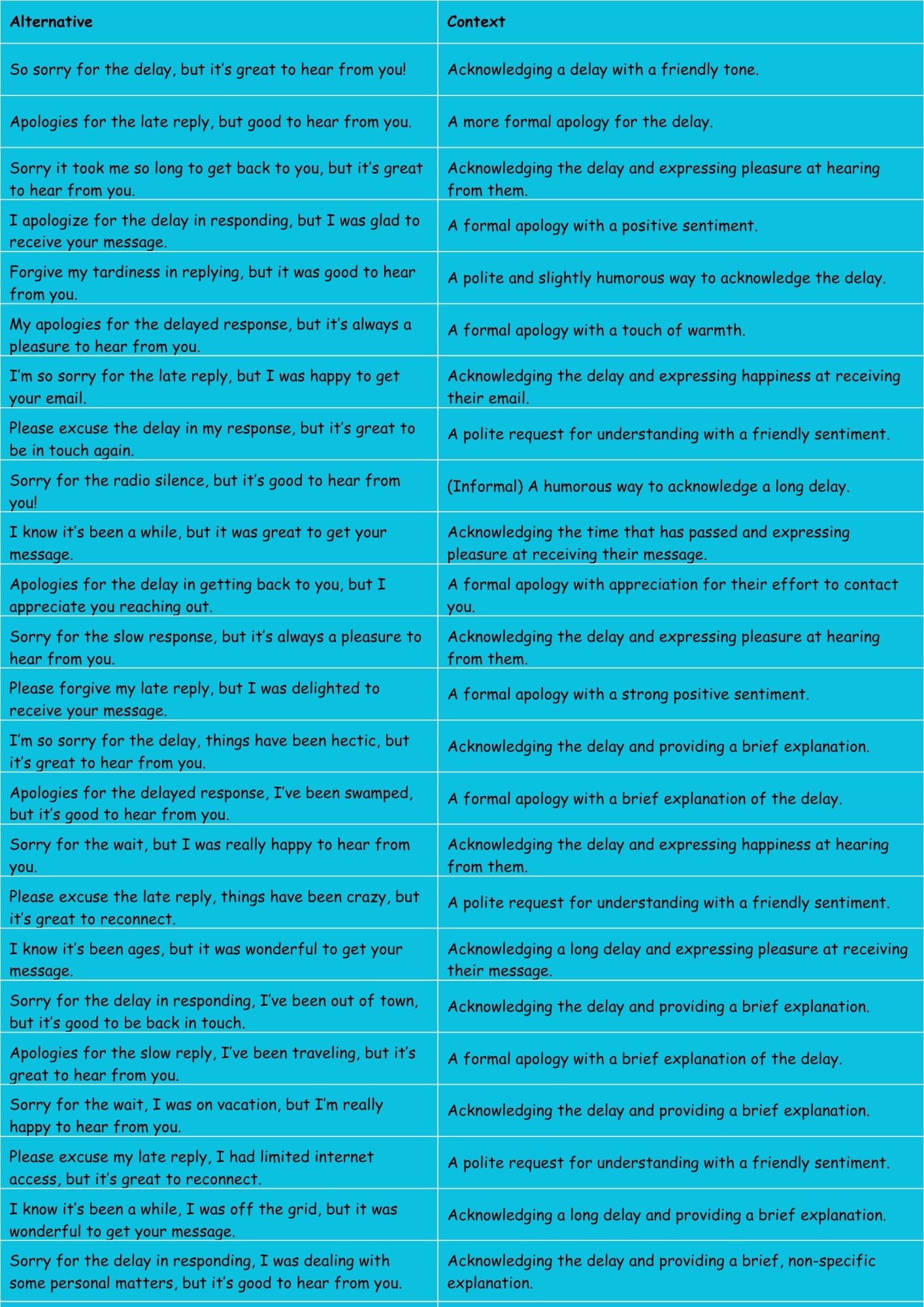
Usage Rules
When choosing an alternative to “Nice to hear from you,” consider the following:
- Formality: Match the level of formality to the context and your relationship with the recipient.
- Specificity: Choose an alternative that reflects the content of the message and your specific reaction to it.
- Sincerity: Ensure your chosen alternative sounds genuine and reflects your true feelings.
- Cultural Sensitivity: Be aware of cultural differences in communication styles and adjust your language accordingly.
Exceptions: In some situations, “Nice to hear from you” may still be the most appropriate choice. For example, when you are unsure of the recipient’s communication preferences or when you want to maintain a neutral and professional tone. Also, consider the overall tone of the conversation. If the other person is using very formal language, you should probably stick to formal alternatives. If they are using very informal language, you can use informal alternatives.
Common Mistakes
Here are some common mistakes to avoid when using alternatives to “Nice to hear from you”:
- Using overly formal language in informal settings: Can sound stiff or insincere.
- Using overly informal language in formal settings: Can be disrespectful or unprofessional.
- Using clichés or overly enthusiastic expressions: Can sound insincere or exaggerated.
- Failing to acknowledge a delay when necessary: Can be seen as rude or inconsiderate.
Examples of Correct vs. Incorrect Usage:
| Incorrect | Correct | Explanation |
|---|---|---|
| “Hey dude, it’s a pleasure to hear from you!” (in a formal email) | “It’s a pleasure to hear from you.” (in a formal email) | The informal greeting “Hey dude” is inappropriate for a formal setting. |
| “I acknowledge receipt of your email.” (to a close friend) | “Good to hear from you!” (to a close friend) | “I acknowledge receipt of your email” is too formal for a friendly conversation. |
| *No acknowledgment of delay* “Good to hear from you!” (after a week of silence) | “Sorry for the delay, but good to hear from you!” (after a week of silence) | Failing to acknowledge the delay can be seen as rude. |
| “I’m so stoked to hear from you!” (in a business email) | “Good to hear from you.” (in a business email) | “Stoked” is too informal for a business email. |
| “Thank you for your prompt response!” (when the response took a week) | “Thank you for your response!” (when the response took a week) | “Prompt Response” is dishonest when the response was slow. |
Practice Exercises
Test your understanding with these practice exercises:
Exercise 1: Choosing the Right Alternative
Choose the most appropriate alternative to “Nice to hear from you” for each scenario:
| Scenario | Alternative A | Alternative B | Alternative C | Answer |
|---|---|---|---|---|
| You receive an email from your boss. | Hey, what’s up? | It’s a pleasure to hear from you. | So glad you reached out! | |
| You receive a text from your best friend. | Good to hear from you. | What’s up? Good to hear from you! | We value your input. | |
| You receive an email from a new client. | I’m absolutely thrilled to hear from you! | Thank you for getting in touch. | Long time no see! | |
| You receive a message from a colleague after a week of silence. | Good to hear from you! | Sorry for the delay, but good to hear from you! | I jumped for joy when I saw your email! | |
| You receive an email with positive feedback from a customer. | It’s a pleasure to hear from you. | We value your input. | You made my day! | |
| You receive a message from a family member after a long time. | It’s always a treat to hear from you. | Thank you for your email. | I appreciate your continued communication. | |
| You receive an email from a potential business partner. | I welcome your communication. | What’s up? | Great to hear your voice. | |
| You receive a message from your neighbor. | Hey, good to hear from you! | I am grateful for your message. | It’s a pleasure to connect with you. | |
| You receive a message from your professor. | Good to see your name pop up. | I found your email to be very informative. | So glad you thought of me. | |
| You receive a casual message from a close work friend. | So good to catch up. | We appreciate your continued communication. | Your correspondence is greatly appreciated. |
Answer Key:
| Question | Answer |
|---|---|
| 1 | B |
| 2 | B |
| 3 | B |
| 4 | B |
| 5 | B |
| 6 | A |
| 7 | A |
| 8 | A |
| 9 | B |
| 10 | A |
Exercise 2: Rewriting Sentences
Rewrite the following sentences using a more appropriate alternative to “Nice to hear from you,” considering the context:
- “Nice to hear from you,” the CEO wrote to the intern.
- “Nice to hear from you!” she texted her best friend.
- “Nice to hear from you,” he emailed the customer service representative.
- “Nice to hear from you,” the student wrote to his professor.
- “Nice to hear from you!” the friend replied after a month.
- “Nice to hear from you,” the manager emailed his employee.
- “Nice to hear from you,” the employee emailed the manager.
- “Nice to hear from you!” the sister texted her brother.
- “Nice to hear from you,” the company replied to a complaint.
- “Nice to hear from you,” the stranger messaged online.
Answer Key:
- “It’s a pleasure to hear from you,” the CEO wrote to the intern.
- “What’s up? Good to hear from you!” she texted her best friend.
- “Thank you for getting in touch,” he emailed the customer service representative.
- “I appreciate you reaching out,” the student wrote to his professor.
- “Sorry for the delay, but good to hear from you!” she texted her friend after a month.
- “Good to hear from you,” the manager emailed his employee.
- “Thank you for your email,” the employee emailed the manager.
- “Hey, good to hear from you!” the sister texted her brother.
- “We appreciate you reaching out to us,” the company replied to a complaint.
- “Good to hear from you,” the stranger messaged online.
Exercise 3: Fill in the Blanks
Fill in the blanks with the most appropriate alternative to “Nice to hear from you”:
- ________, it’s been too long! (To a friend after a long time)
- ________, I was so
- ________, I was so worried! (To a family member after they were missing)
- ________, I missed you so much! (To a spouse after a long business trip)
- ________, I am glad you enjoyed it! (To a customer after they tried a product)
- ________, I am always here for you! (To a friend going through a difficult time)
- ________, I am glad to see you are doing well! (To a former colleague)
- ________, I am so happy to be back in touch! (To an old friend)
- ________, I was thinking about you the other day! (To a relative)
- ________, I hope everything is going well! (To a business partner)
- ________, I appreciate your continued support! (To a loyal customer)
Answer Key:
- Hey, good to hear from you
- I am so thrilled to hear from you
- I am absolutely thrilled to hear from you
- I am glad to hear from you
- I am glad to hear from you
- I am glad to hear from you
- I am so happy to hear from you
- I am happy to hear from you
- I am glad to hear from you
- I am happy to hear from you
Advanced Topics
For a deeper dive, consider these advanced topics:
- Cross-cultural communication: How different cultures perceive and use phrases like “Nice to hear from you.”
- Psychology of communication: The impact of different greetings on relationship building.
- NLP techniques: Using neuro-linguistic programming to tailor your language for maximum impact.
FAQ
Is “Nice to hear from you” always appropriate?
While generally polite, it can sound generic if overused. Tailor your response to the context and your relationship with the recipient.
How formal should I be in a business email?
Err on the side of formality, especially in initial communications or when addressing superiors. Use semi-formal alternatives for ongoing communication with colleagues.
What if I genuinely haven’t heard from someone in a long time?
Acknowledge the time that has passed with phrases like “Long time no see!” or “It’s been a while!” followed by an expression of pleasure at hearing from them.
How can I make my response sound more sincere?
Use specific details from their message to show you have read and considered their communication. Express genuine interest in their news or updates.
What are some alternatives to “Nice to hear from you” in a thank-you note?
Consider phrases like “I truly appreciate your thoughtfulness” or “Your kindness means so much to me.”
Can I use emojis in professional communication?
Use emojis sparingly and only in situations where they are appropriate. Avoid using them in formal communications or when addressing superiors.
Conclusion
Mastering alternatives to “Nice to hear from you” enhances your communication skills, allowing you to express yourself more effectively and build stronger relationships. By considering the context, formality, and your relationship with the recipient, you can choose the most appropriate alternative to convey your sentiments with sincerity and impact. Embrace these variations to make your interactions more meaningful and engaging, leaving a positive impression on those you communicate with.

